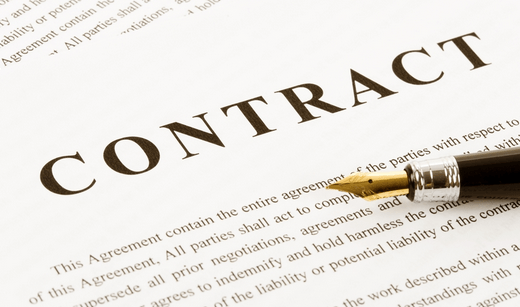

Hurricane Harvey made landfall between in Texas Friday night, and the rainfall could reach over 4 feet in some areas.
- Hurricane Harvey made landfall on the Texas Gulf coast Friday night, with winds topping 130 mph.
- Dangerous flooding is expected for days, with as much as 50 inches of rain forecasted in Houston.
- One fatality has been reported in Rockport, Texas, and another was confirmed in Houston, where flash floods are dumping as many as 5 inches of rain an hour.
Hurricane Harvey arrived on the shores of Texas Friday night, packing sustained wind speeds as high as 130 mph. While the storm has since been downgraded to a tropical storm with maximum winds of 40 mph, it's parked itself over the southeastern half of the state, and is expected to dump up to 50 inches of rain onto parts of Texas.
Thousands of residents, many in the towns of Port Aransas, Port O'Connor, and Corpus Christi, where the hurricane first made landfall, evacuated their homes, and two deaths have so far been confirmed.
The rain hasn't stopped, and forecasters don't expect it to let up until Tuesday, with total rainfall reaching 15 to 25 inches across much of Texas by Thursday. Harvey is only moving at 2 mph now, crawling its way across southeast Texas, leaving flooding and destruction in its wake.
At 1 p.m. CDT on Sunday, the storm was sitting about 25 miles northwest of Victoria, Texas. But the National Hurricane Center is still warning of "catastrophic and life-threatening flooding," and the National Weather Service called the rainfall event "unprecedented."
"There is an unusual amount of moisture available to this storm, and it is large and powerful, so rainfall records could topple," Jeff Masters, a meteorologist at The Weather Company who cofounded the weather-data website Weather Underground, told Business Insider.
The storm surge, the quick rise in water caused by a hurricane's strong winds, on the Texas coast crested several feet at the height of the storm. By Sunday afternoon, the storm surge warning was discontinued.
Officials warn that Texas is only halfway through the worst of the storm.
'Widespread devastation'
So far, two deaths from Harvey have been confirmed, the Associated Press reported, one in the coastal city of Rockport and another in Houston. Officials expect more deaths to be confirmed in the coming days.
On Saturday and Sunday, accounts of destruction in the areas hit hardest by Harvey were starting to emerge. The AP estimates that about 300,000 residents are currently without power.
Rockport seems to have sustained extreme damage. Cell service is out in the area, and residents have been told it is not safe to return for the time being (a mandatory evacuation was put in place there). Rockport Mayor Charles Wax told CNN that "there's been widespread devastation."
As the storm approached on Friday, Rockport Mayor Pro Tem Patrick Rios requested that people who chose not to evacuate write their names and social security numbers on their arms, in case rescuers later need to identify them.
Port Aransas, Texas was also impacted heavily. Mayor Charles Bujan told KIII TV that there are likely a few fatalities there, but a number cannot be confirmed. The city's Pioneer Trailer Park, he said, suffered a "100% loss."
Strong winds, flooding, and debris on roadways have kept emergency crews from reaching of many areas, so comprehensive surveys of the damaged areas have yet to be completed.
In a tweet Saturday morning, President Donald Trump commended the head of the Federal Emergency Management Agency for his handling of the hurricane. In a message addressed to FEMA head Brock Long, Trump said: "You are doing a great job - the world is watching! Be safe."
Masters estimated on Thursday that Harvey could cause $10 billion in damage, but more recent estimates are higher. The last major hurricane to hit the Texas Gulf coast was Ike, a Category 4 storm that caused $38 billion in damage in 2008.
Why hurricane scales don't tell the full story
Hal Needham, a hurricane scientist at Louisiana State University, wrote in a blog post on the weather site WXshift that a storm's category doesn't fully convey how dangerous rainfall could be and how much damage it could cause.
"Hurricanes and tropical storms throw three hazards at us: wind, rainfall, and storm surge," he wrote. "Think of the impacts separately. Storms with weaker winds are more likely to stall and dump heavier rainfall. This shocks people, as it would seem intuitive that a Category 5 hurricane would tend to dump more rain than a Category 1 hurricane. But the opposite is true."
While strong winds can rip shingles off roofs and tear down power lines, flooding often causes more widespread, costlier damage — and can be more dangerous for humans. Needham said that the scale used to distinguish a hurricane from a tropical storm was based solely on maximum sustained wind but that "storms are too complex to define by one number."
How Texas prepared
Hurricane Harvey is President Donald Trump's "first serious" crisis of his presidency.
The White House said in a statement on Friday afternoon that the president is closely monitoring the storm, and Trump has continued to tweet updates on the response throughout the weekend. He said Sunday morning that he would visit Texas as soon as he could "without causing disruption."
Before the hurricane hit, many areas — including Rockport and Port Aransas — issued mandatory evacuation orders. The Corpus Christi Regional Transportation Authority began busing evacuees to San Antonio on Thursday.
Texas Gov. Greg Abbott declared a state of disaster on Wednesday for 30 counties in Harvey's path, and added 20 more counties to that declaration on Saturday, freeing up state money and resources to respond to the storm. He issued a federal disaster declaration in 19 counties, which Trump approved. Abbott told the New York Times that his government was preparing to assist up to 41,000 evacuees.
The American Red Cross opened pop-up shelters throughout San Antonio, and the San Antonio Current reported that 6,000 beds were ready by Friday morning.
The Health and Human Services Department said it was deploying assets to Texas and Louisiana ahead of Harvey's landfall, moving six Disaster Medical Assistance Teams to the Dallas area, and Incident Response Coordination Teams to support medical personnel in both states.
In addition to giving money to the Red Cross's Harvey fund, here is a list of organizations you can donate to to help those affected by the storm.
Hurricane Harvey made landfall between in Texas Friday night, and the rainfall could reach over 4 feet in some areas. Read Full Story






















Facebook
Twitter
Pinterest
Instagram
Google+
YouTube
LinkedIn
RSS